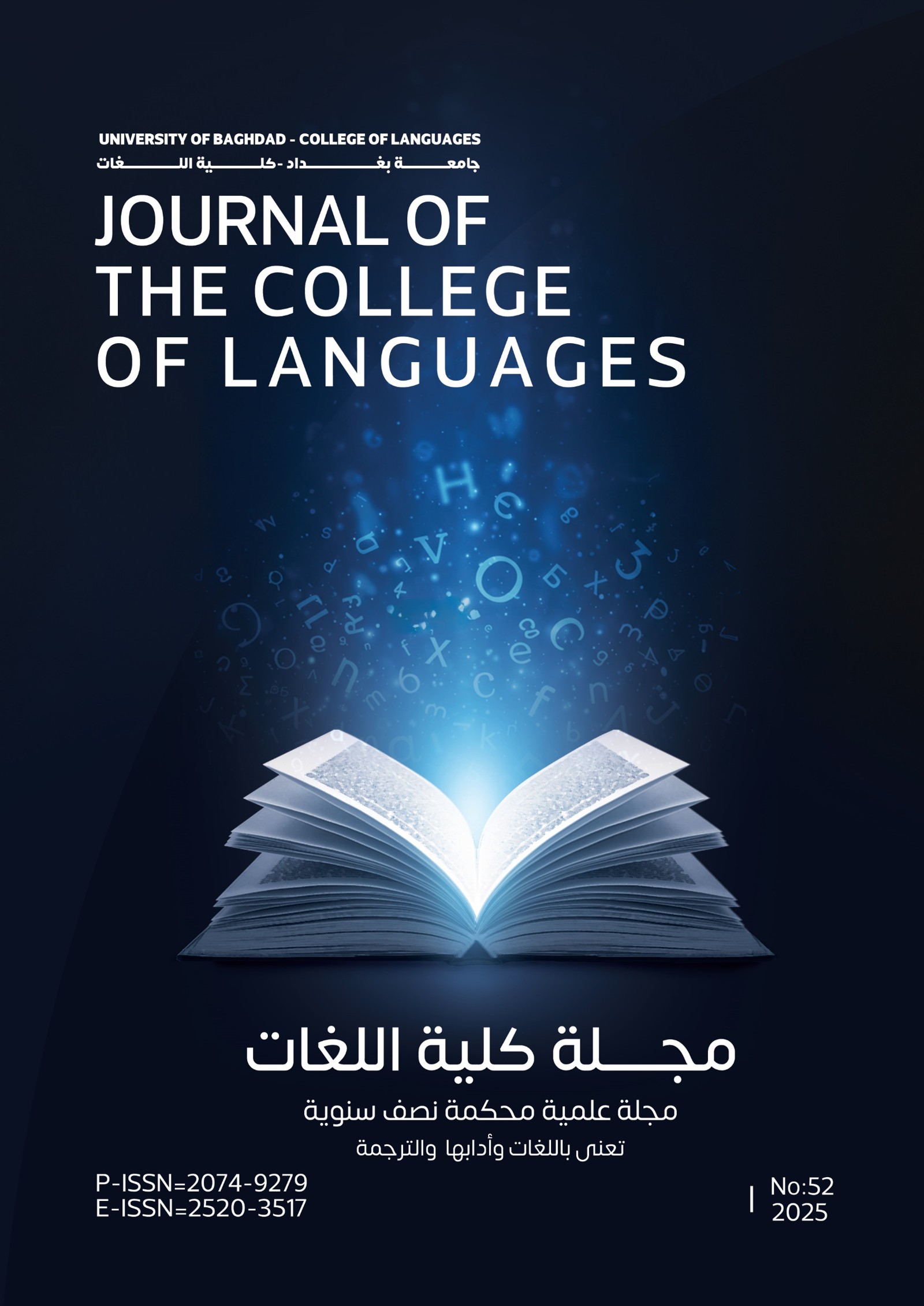Individualism and the Symbolic Language of Imagination (Pablo Neruda as an Example)
DOI:
https://doi.org/10.36586/jcl.2.2024.0.49.0023Keywords:
Romanticism, Imagination, Individualism, Pablo Neruda, The dialectical relationshipsAbstract
Pablo Neruda's artistic distinctiveness can be considered in two ideas or attitudes of romanticism. First, the imagination, which is the result of conduct and spirituality, and second, the individualism, which is a collection of mysterious mysteries from the texts of individuality based on philosophical sonnets. His collection of poems points out the ethereality and indescribability of life, employing the reality of life at the level of human perception in a symbolic language. In other words, Pablo Neruda recreates the meanings in poetry through the three ideas of reduction, interpretation, and analysis. "What is the essential connection between individualism and the symbolic language of Pablo Neruda's imagination and What are the reasons for this tendency to express symbolically in his poems?" are the main questions in this study. There is a dialectical relationship between these two components and the study of the dialectical relations between phenomena and the concepts of philosophical and historical origin has a long history. The dialectic of relationship detection is based on internal contradictions that arise with the philosophy of Socrates and Plato and conclude in Hegel's thought. In Pablo Neruda's poetry, the element of imagination moves from the social context, but eventually becomes something that has an individualistic character.
Received on 3/5/2023
Accepted on 20/8/2023
Published on 2/1/2024
References
Conway, C. (2008). The Revolutionary Poetics of Pablo Neruda. A Contra Corriot. A Journal on Social History and Literature in Latin America, Vol. 6.
Coupe, L. (2000). The Green Studies Reader: From Romanticism to Ecocriticism . New York: Routledge.
Devries, S. (2016). Creature Discomfort: Fauna- Criticism, Ethics and the Representation of Animals in Spanish American Fiction and Poetry . Boston : Brill Rodopi.
Duran, M., & Safir , M. (1981). Earth Tones: The Poetry of Pablo Neruda . Bloomington: Indiana UP.
Handley, G. (2007). New World Poetics: Nature and Adamic Imagination of Whitman, Neruda, and Walcott. Athens : University of Georgia Press.
Johnson, P. (2015). Constructing Images, Translation, and Ideology. Pablo Neruda's Canto General During the McCarthy Years in Us. Journal of Siberian Federal University, Humanities and Social Sciences, Vol. 2.
Karmakar, G. (2015). Poetic Vision of Pablo Neruda. European Journal of English Language and Literature Studies, Vol. 3.
Kellert, S., & Farnham, T. (2002). The Good in Nature and Humanity . Washington : D.C. Island Press.
Khosravi, G. D., Vengadasamy, R., & Raihanah, M. M. (2016). Pablo Neruda as the Placemaker: An Ecocritical Enquiry of Place in Neruda's Selected Poems, Vol. 24. Journal of Social Science and Humanities .
Marchant , E. A. (1999). The Professional Outsider: Gabriela Mistral on Motherhood and Nation . America: Latin America Literary Review.
Neruda , P. (1973). Residence On Earth (Residencia en la tierra). New York: New York: New Directions Pub. Corp.
Neruda, P. (1921). Sexo. Claridad 1.23.
Neruda, P. (1950). Muchos Somos. Universidad de Chile.
Downloads
Published
Issue
Section
License
Copyright (c) 2024 Journal of the College of Languages (JCL)

This work is licensed under a Creative Commons Attribution 4.0 International License.








